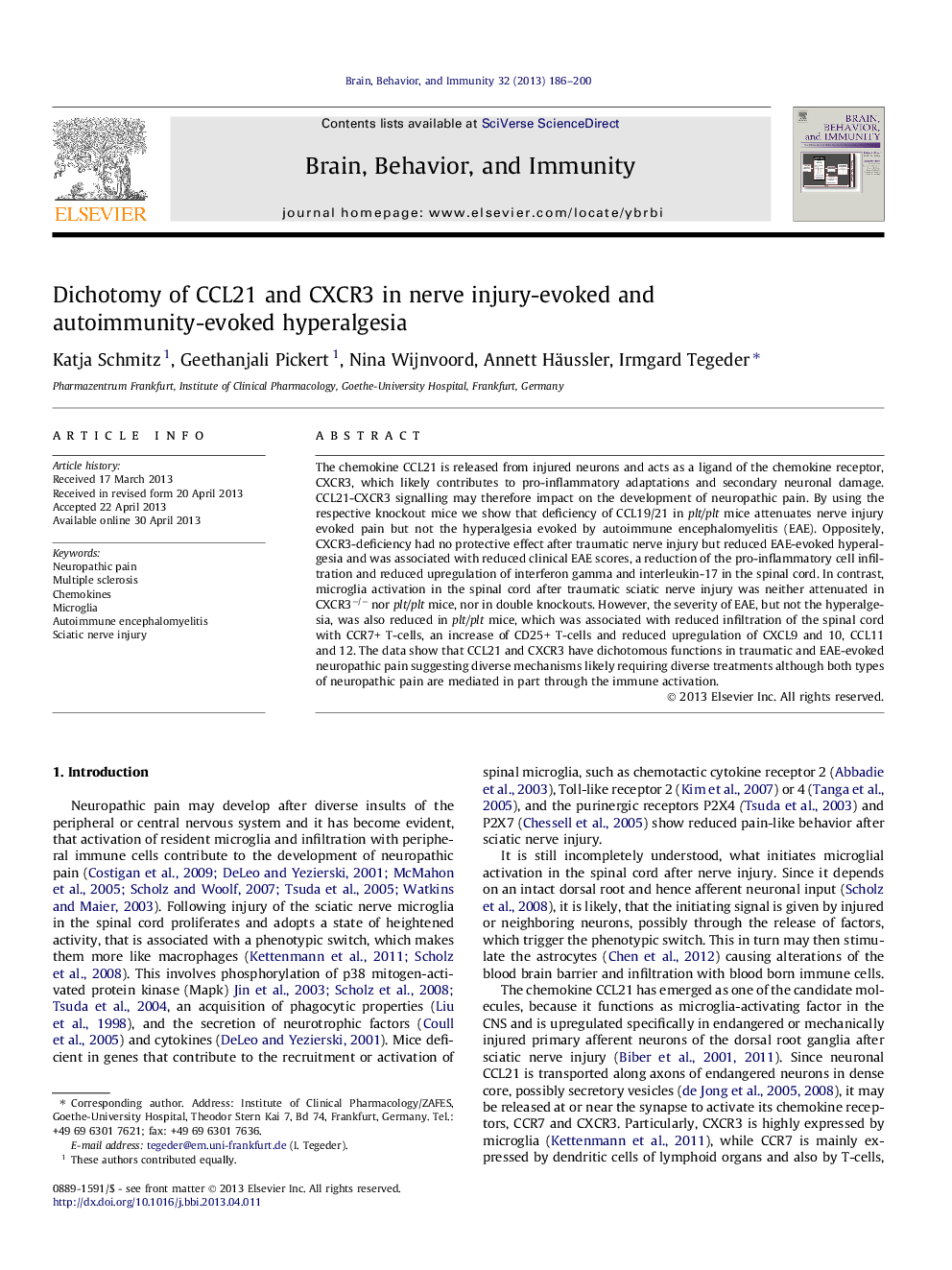| Article ID | Journal | Published Year | Pages | File Type |
|---|---|---|---|---|
| 7282118 | Brain, Behavior, and Immunity | 2013 | 15 Pages |
Abstract
The chemokine CCL21 is released from injured neurons and acts as a ligand of the chemokine receptor, CXCR3, which likely contributes to pro-inflammatory adaptations and secondary neuronal damage. CCL21-CXCR3 signalling may therefore impact on the development of neuropathic pain. By using the respective knockout mice we show that deficiency of CCL19/21 in plt/plt mice attenuates nerve injury evoked pain but not the hyperalgesia evoked by autoimmune encephalomyelitis (EAE). Oppositely, CXCR3-deficiency had no protective effect after traumatic nerve injury but reduced EAE-evoked hyperalgesia and was associated with reduced clinical EAE scores, a reduction of the pro-inflammatory cell infiltration and reduced upregulation of interferon gamma and interleukin-17 in the spinal cord. In contrast, microglia activation in the spinal cord after traumatic sciatic nerve injury was neither attenuated in CXCR3â/â nor plt/plt mice, nor in double knockouts. However, the severity of EAE, but not the hyperalgesia, was also reduced in plt/plt mice, which was associated with reduced infiltration of the spinal cord with CCR7+ T-cells, an increase of CD25+ T-cells and reduced upregulation of CXCL9 and 10, CCL11 and 12. The data show that CCL21 and CXCR3 have dichotomous functions in traumatic and EAE-evoked neuropathic pain suggesting diverse mechanisms likely requiring diverse treatments although both types of neuropathic pain are mediated in part through the immune activation.
Keywords
Related Topics
Life Sciences
Immunology and Microbiology
Immunology
Authors
Katja Schmitz, Geethanjali Pickert, Nina Wijnvoord, Annett Häussler, Irmgard Tegeder,
